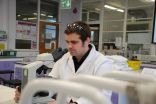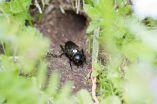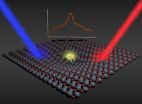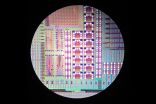(Press-News.org) ANN ARBOR--Use of clean fuels and updated pollution control measures in the school buses 25 million children ride every day could result in 14 million fewer absences from school a year, based on a study by the University of Michigan and the University of Washington.
In research believed to be the first to measure the individual impact on children of the federal mandate to reduce diesel emissions, researchers found improved health and less absenteeism, especially among asthmatic children.
A change to ultra low sulfur diesel fuel reduced a marker for inflammation in the lungs by 16 percent over the whole group, and 20-31 percent among children with asthma, depending on the severity of their disease.
"The national switch to cleaner diesel fuel and the adoption of clean air technologies on school buses lowered concentrations of airborne particles on buses by as much as 50 percent," said Sara Adar, the study's lead author and the John Searle Assistant Professor of Public Health at the U-M School of Public Health. "Importantly, our study now shows measurable health improvements from these interventions, too.
Although the study focused only on school children, Adar said it is easy to imagine similar benefits for other groups of people such as commuters, occupational drivers and people living in communities impacted by heavy diesel traffic.
The team's research appears online in the American Journal of Respiratory and Critical Care Medicine.
The Environmental Protection Agency's National Clean Diesel Campaign required the production of cleaner fuel and set stricter emissions standards for diesel vehicles purchased after 2006.
It also provided EPA-administered grant-based funding to retrofit, replace or repower older diesel engines, ranging from farm equipment to consumer haulers, and school buses to public transit vehicles. From 2008 to 2010, nearly 20,000 school buses were altered or replaced in effort to reduce the amount of particulate matter and nitrogen oxide released into the air.
The researchers followed 275 Washington state elementary children who rode buses to and from school, before and after their districts adopted cleaner fuels and technologies. Air pollution was measured during 597 trips on 188 school buses from 2005 to 2009.
Technicians went to the schools to perform monthly measurements to check lung function and inflammation, and child absenteeism from school was recorded.
Over the course of the four years, the bus fleet of two school districts was altered with special emissions devices or with the fuel used to power them. Some were fitted with diesel oxidation catalysts or closed crankcase ventilation systems, which are used to reduce tailpipe and engine emissions, respectively. All the buses switched to ultra low sulfur diesel and some used biodiesel. These fuels are projected to reduce particle generation by about 10-to-30 percent, the researchers say.
Children in the districts missed an average of 3.1 school days over nine months but there was an 8 percent lower risk of being absent in the previous month when riding a bus with ultra low sulfur diesel fuel. For those riding a bus that was fitted with a diesel oxidation catalyst, there was a 6 percent reduction in the risk of absenteeism.
Using these and other measurements, the researchers were able to extrapolate a 14 million day reduction in absenteeism for the nation's bus-riding children if all vehicles were altered to reduce emissions.
"Our research also suggests that children riding buses with cleaner fuels and technologies may experience better lung development as compared to those riding dirtier buses," Adar said. "This is consistent with recent findings from the Children's Health Study in California, which reported more robust lung development in children with improvements in outdoor air quality."
INFORMATION:
Other authors: Jennifer D'Souza and Jordan Jahnke of the University of Michigan; Lianne Sheppard, Dr. Joel Kaufman, Dr. Teal Hallstrand, James Sullivan, Timothy Larson and L.J. Sally Liu of the University of Washington; and Mark Davey of the Swiss Tropical and Public Health Institute.
Study: Adopting Clean Fuels and Technologies on School Buses: Pollution and Health Impacts in Children
Sara Adar
Boosting teenagers' ability to cope with online risks, rather than trying to stop them from using the Internet, may be a more practical and effective strategy for keeping them safe, according to a team of researchers.
In a study, more resilient teens were less likely to suffer negative effects even if they were frequently online, said Haiyan Jia, post-doctoral scholar in information sciences and technology.
"Internet exposure does not necessarily lead to negative effects, which means it's okay to go online, but the key seems to be learning how to cope with the stress ...
CAMBRIDGE, Mass--Drizzling honey on toast can produce mesmerizing, meandering patterns, as the syrupy fluid ripples and coils in a sticky, golden thread. Dribbling paint on canvas can produce similarly serpentine loops and waves.
The patterns created by such viscous fluids can be reproduced experimentally in a setup known as a "fluid mechanical sewing machine," in which an overhead nozzle deposits a thick fluid onto a moving conveyor belt. Researchers have carried out such experiments in an effort to identify the physical factors that influence the patterns that form. ...
April 23, 2015 - Interventional treatments--especially surgery--provide good functional outcomes and a high cure rate for patients with lower-grade arteriovenous malformations (AVMs) of the brain, reports the May issue of Neurosurgery, official journal of the Congress of Neurological Surgeons. The journal is published by Wolters Kluwer.
The findings contrast with a recent trial reporting better outcomes without surgery or other interventions for AVMs. "On the basis of these data, in appropriately selected patients, we recommend treatment for low-grade brain AVMs," concludes ...
A new study by the University of Chicago Booth School of Business Assistant Professor Amanda Sharkey and University of Utah Assistant Professor Patricia Bromley found that environmental ratings have spillover effects on other companies' behavior. Rated firms reduce their toxic emissions even more when their peers are also rated. In addition, rated peers can even motivate some unrated companies to reduce their emissions.
The research is unusual in that the role of peers in conditioning how firms respond to ratings systems has received little examination.
The study, "Can ...
SINCE its first use in the 1980s - a breakthrough dramatised in recent ITV series Code of a Killer - DNA profiling has been a vital tool for forensic investigators. Now researchers at the University of Huddersfield have solved one of its few limitations by successfully testing a technique for distinguishing between the DNA - or genetic fingerprint - of identical twins.
The probability of a DNA match between two unrelated individuals is about one in a billion. For two full siblings, the probability drops to one-in-10,000. But identical twins present exactly the same ...
This news release is available in German.
An individual's behaviour in risky situations is a distinct personality trait both in humans and animals that can have an immediate impact on longevity. Researchers from the Max Planck Institute for Ornithology in Seewiesen have now found differences in personality types for the first time in a population of free living field crickets. Risk-prone individuals showed a higher mortality as they stayed more often outside their burrow where they can be easily detected by predators, compared to risk averse individuals. Moreover, ...
Navigating through a cluttered environment at high speed is among the greatest challenges in biology - and it's one virtually all birds achieve with ease.
It's a feat David Williams hopes to understand.
A former post-doctoral fellow in the lab of Andrew Biewener, the Charles P. Lyman Professor of Biology, and a current post-doc at the University of Washington, Williams is the lead author of a study that shows birds use two highly stereotyped postures to avoid obstacles in flight. The study could open the door to new ways to program drones and other unmanned aerial ...
This news release is available in German.
Researchers of Karlsruhe Institute of Technology (KIT) have unveiled an important step in the conversion of light into storable energy: Together with scientists of the Fritz Haber Institute in Berlin and the Aalto University in Helsinki/Finland, they studied the formation of so-called polarons in zinc oxide. The pseudoparticles travel through the photoactive material until they are converted into electrical or chemical energy at an interface. Their findings that are of relevance to photovoltaics among others are now published ...
A Spanish-led team of European researchers at the University of Cambridge has created an electronic device so accurate that it can detect the charge of a single electron in less than one microsecond. It has been dubbed the 'gate sensor' and could be applied in quantum computers of the future to read information stored in the charge or spin of a single electron.
In the same Cambridge laboratory in the United Kingdom where the British physicist J.J. Thomson discovered the electron in 1897, European scientists have just developed a new ultra-sensitive electrical-charge sensor ...
How long is the way from the city hall to the train station? When we estimate distances, something curious happens: short distances seem longer, and long distances shorter than they really are. Similar biases occur during judgments of volume, brightness or time. Psychologists call this phenomenon Vierordt's law. Its independence of the involved sensory systems suggests that our brain possesses universal principles for the assessment of physical quantities. However, where do the characteristic estimation biases stem from? In collaboration with colleagues from Zurich, neuroscientists ...




